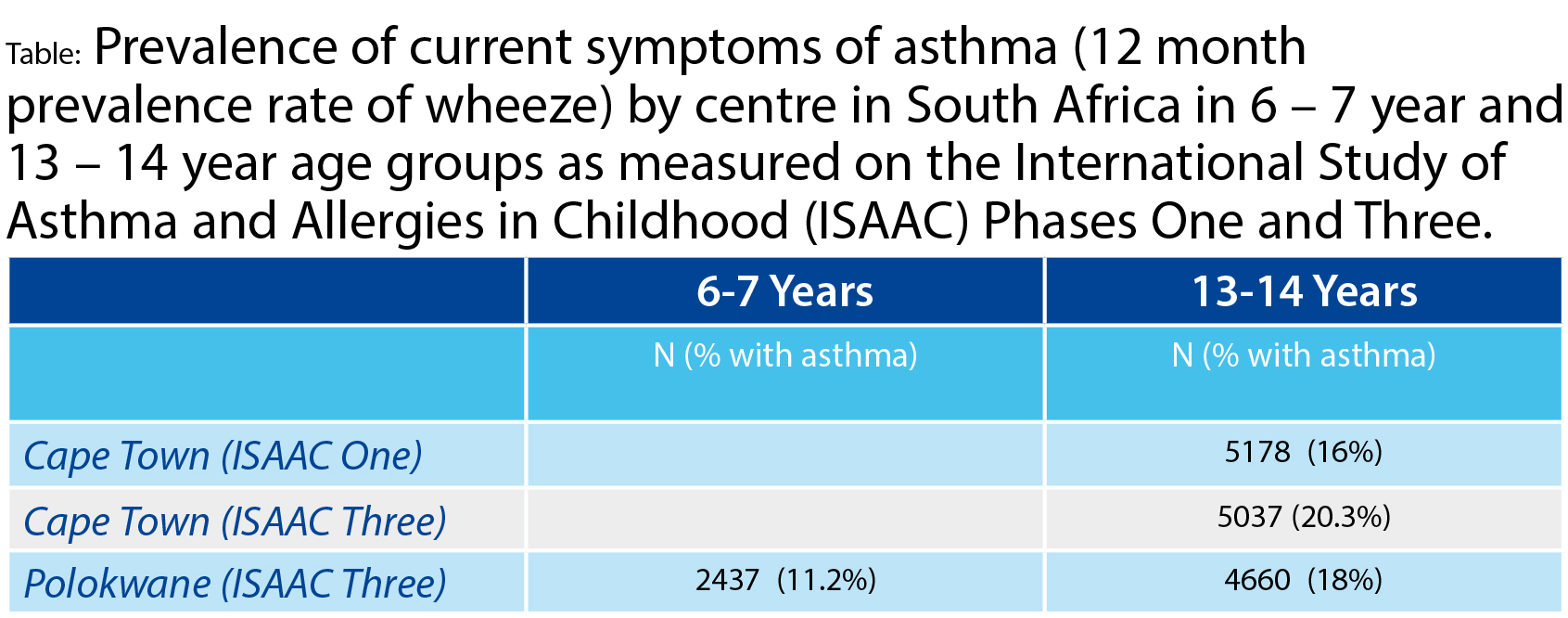
South Africa
Despite substantial reductions, asthma death rates in South Africa remain among the highest in the world.
Asthma is the most common chronic illness in South African children and its prevalence is increasing in both urban and rural areas. According to the International Study of Asthma and Allergies in Childhood (ISAAC) Phase Three, asthma prevalence for 13-14-yearolds was 20% in Cape Town (increased from 16% found in ISAAC Phase One) and 18% in Polokwane (Table). Severe symptoms also increased over this time, with approximately half of all children with asthma having severe, uncontrolled symptoms. Amongst 6-7 year old children in Polokwane, the prevalence of asthma symptoms and of severe disease was 11.2% and 5.7%, respectively.
Increasing prevalence
Studies using bronchial hyper-responsiveness (excessive sensitivity of the airway to external stimuli) have also shown an increase in asthma prevalence in both rural and urban settings. Factors associated with asthma prevalence or disease severity in South African children include the adoption of an urban lifestyle, atopy, obesity, respiratory infection, or exposure to industrial pollution or tobacco smoke.
High mortality
South Africa is ranked 25th worldwide for asthma prevalence and is ranked fifth for asthma mortality, with an estimated 18.5 deaths per 100,000 asthma cases (Chapter 5, Figures 1 and 2). Thus, despite substantial reductions in mortality over the past decade, the death rates in South Africa remain among the highest in the world. The lack of appropriate diagnosis, treatment or access to care may be important considerations in tackling asthma morbidity and mortality in South Africa.

.jpg)